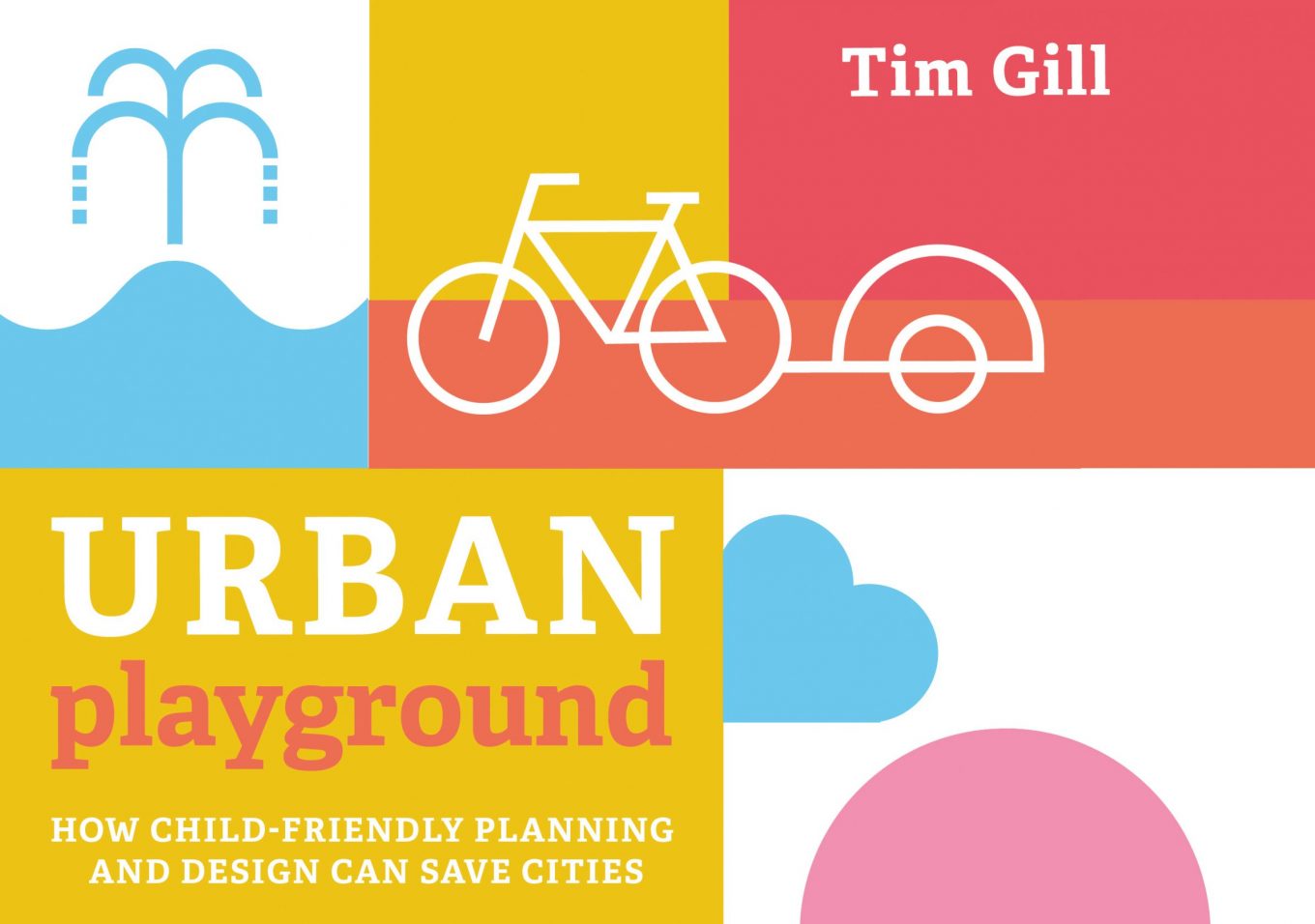Marketa Nosalova reviews Tim Gill’s new book Urban Playground: How Child Friendly planning and design can save cities.

A swing set tied in chains. A barricaded slide. A padlocked playground gate.
The heart-breaking scenes of children’s playground equipment being taped-up and fenced-off will remain among the most indelible, defining images of the pandemic and its lockdowns. Locking down playgrounds was supposed to prevent children from playing together in a time of social distancing. But it only begs the question: why should children’s play be limited to playgrounds? If children could have the whole city to play in, why should we fence them into the gated corner of a public park? This is a question that Tim Gill tackles in his new book Urban Playground: How Child-Friendly Planning and Design Can Save Cities.
The book begins by painting a bleak picture of how four generations of children from the same family have had their ‘roaming distance’ reduced from six miles for the great-grandfather in 1919 to 300 metres for his great-grandson in 2007. This limitation in the freedom of movement for children has wider knock-on effects for our society, such as obesity and inactivity. A toddler is steered toward a sedentary lifestyle almost from the moment he takes his first steps. In England in 2018-19 over one-third of Year 6 children were overweight or obese.
The stubborn persistence of car-dependent places and the limitations this places on children’s lives is well documented throughout the book. Traffic danger, air pollution, noise pollution, and lack of access to green space, all have a link to children’s health and happiness, or rather unhappiness and poor health. Anyone looking for evidence to support arguments in favour of more walkable and cyclable places will find plenty in this book.
But despite this bleak diagnosis of the current state, the book is hopeful and optimistic about what’s possible, identifying recent examples of good practice in children’s urban play that can point the way for others. One of the most powerful examples is in Rotterdam, where a challenging urban environment, blighted by family flight, is being transformed through child-friendly planning and development. This change did not happen overnight or by accident. There was intention, strategy, planning and assigned budgets every step of the way. Tim Gill takes us through Rotterdam’s transformation step-by-step and includes relevant details such as municipal resources, phasing and investment. We learn about the ‘Dream Streets’ – an initiative inviting residents to bid for funding to co-create streets – and ‘Duimdrop’ – large storage boxes filled with children’s equipment for play and sports toys which is run by local volunteers. UK cities take note.
And Rotterdam isn’t the only place that is taking child-friendly urban planning seriously. The book is packed with examples from Barcelona to Boulder via Fortaleza, Freiburg, Tel Aviv and Tirana. There is enough depth to the research to satisfy the PhD student, along with bold, practical recommendations for the politician and placemaker. Barcelona’s superblocks, Ghent’s natural play spaces, Norway’s child-sensitive planning and land-use legislation, and Recife’s newly created post of Secretary of Early Childhood are all discussed at length. Anyone eager to create child-friendly places will find this book a great place to start.
‘Making it Happen’ is a whole chapter dedicated to the tools and principles needed for child-friendly urban planning. There are diagrams, tables, sketches, building blocks and models – a policymaker’s dream – on topics such as engagement methods, impact assessment, and the challenges and opportunities for ongoing management. There is much to digest, but it is all vividly brought to life with imagery that ranges from the delightful – e.g. Copenhagen’s Garden of the Senses – to the dismal – e.g. the identikit KFC playground (Kit, Fence, Carpet).
An important message of Gill’s book is that the creation of child-friendly cities isn’t just about children. It’s about all of us. And the planet. Children are the ‘indicator species’ of a healthy habitat. If we let children’s play area extend beyond the confines of the fence of a playground and we learn with and from them to make child-friendly places then we will have healthier, happier, more inclusive and more sustainable cites that will benefit everyone – young and old. The whole village, town or city should be thought of as an ‘Urban Playground’.
Marketa Nosalova is currently a development manager at TOWN, moving onto a new role within the Strategic Projects team at Homes England






